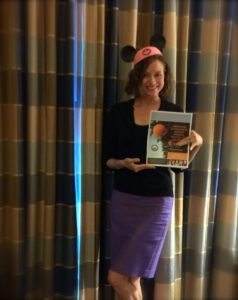When my sister was in law school, I visited a class with her— not on torts or contracts, but on public speaking. They practiced things like improv games and role playing. They videotaped themselves speaking and did self-critiques. Now, persuasive public speaking is obviously a skill that lawyers need, but we science folks need it to. Do we not regularly need to convince people of the value of our work? We do. And many of us never get very good at it.
Why Should You Bother With Presenting, When It’s So Nerve Wracking?
Here’s a short list of reasons why you might give a talk: Disseminate science. Make a name for yourself. Defend your dissertation. Get hired in an academic position. Get things on your CV that look good when you’re chasing tenure. Educate the public (I want to put in a plug for this one— speak to a general audience sometimes! Science is for everyone). Teach students. Share clinical knowledge— think grand rounds. Persuade colleagues to adopt better practices. Make something complex and specialized more accessible to a wider audience. Get free or discounted conference fees (maybe!). Get paid (maybe!). Get your travel paid for (maybe!).

The author presented at a conference held at Disneyland– who says work can’t be fun?
How Can you Hone Your Speaking Skills?
If I’ve done my job so far, you’re convinced that giving a talk can help your career. But not all talks are created equal! We’ve all sat through terrible talks, shifting in our seats and surreptitiously checking twitter. Conversely, a truly excellent talk can be inspiring. How do you set yourself up to give one of those?
My suggestions:
- Practice often. Give your talk to a colleague who will be honest with you. Give your talk to a friend who’s not in your field to judge clarity.
- Time yourself until you know you have it down to the required length— and give yourself a buffer (plan to talk for 20 minutes if the slot is for 25).
- Use visuals thoughtfully & be sure they help you make your key points. Never say “I know you can’t see this but,” or, “I’m sorry this is such a busy slide.” If you see those issues, fix them.
- Don’t read your slides. They’re there to help the audience follow along, not to serve as cue cards. Remember that what you write in your paper isn’t exactly the same what you say in your talk— keep the ideas, but spoken language is often less formal and less complex. Also when someone is reading a script, it’s clear to the audience. So get used to speaking from key points rather than scripted sentences.
- Tell stories. This is a universally engaging technique. Whether this means including a personal anecdote or a real-world application related to your subject, it helps make you interesting and memorable.
- Know your audience. How much background do you need to give? What terms do you need to define? Are they interested in the fine points of your data, or just the take-home message?
- Pay attention to great (and awful) talks you attend. What made it good, or bad?
- Consider inclusivity. Are you speaking at an event that represents varied races, genders, fields, and ages? NIH head Francis Collins recently committed to saying “yes” only to events with a diverse makeup. You can do this too. Second, consider the images and references in your materials. Are they culturally inclusive? If not, fix it.
What Can I Speak About, and Where Can I Do It?
Say yes a lot when you’re new— both the exposure and the practice are valuable. When you’re more established, you have to learn to say no to things, but when you’re finding your way, every time you say yes, you are honing your skills.

The author presenting at a national conference
Here are a few talks I’ve given recently:
- Cardiovascular Physical assessment skills 101 (to NP students).
- Women’s heart health: Know your risk and live your life (to retirement community residents)
- Symptom trajectories after an emergency department visit for acute coronary syndrome (to a research regional conference audience)
- Simulation in nurse practitioner education (to an education-based national conference audience)
- Education strategies to expand access to care in rural and underserved communities (for a job talk)
- Technology innovations to engage online NP students (to a national practice-based conference audience)
Note that they’re all to different audiences, and while the content overlaps in two of my main focus areas (women’s cardiovascular health and nurse practitioner education), I didn’t try to give the same talk to every group I spoke to.
Consider asking a senior scientist or mentor to throw things your way— they are likely turning down invitations that they’re too busy to accept. Submit abstracts to local, regional, and national conferences. Volunteer to give guest lectures to students. With this kind of exposure, you can really build your reputation as an expert on your area. Break a leg!
Public speaking resources:
- Register for this AHA webinar, 7/23/19: https://americanheart.co1.qualtrics.com/jfe/form/SV_8pLUDPLgvxNdT2R
- Toastmasters— groups on many campuses and communities. Look up a chapter in your community!
- Romancing the Room: How to Engage Your Audience, Court Your Crowd, and Speak Successfully in Public, by James Wagstaffe
- A great EM cases podcast episode: https://emergencymedicinecases.com/presentation-skills/